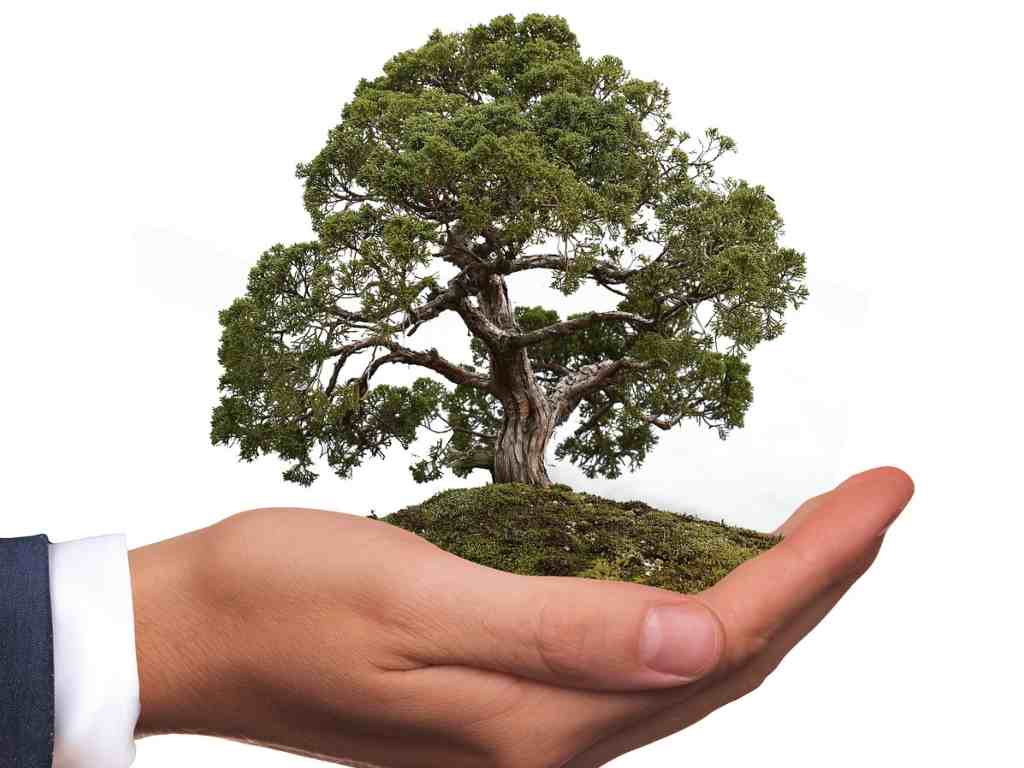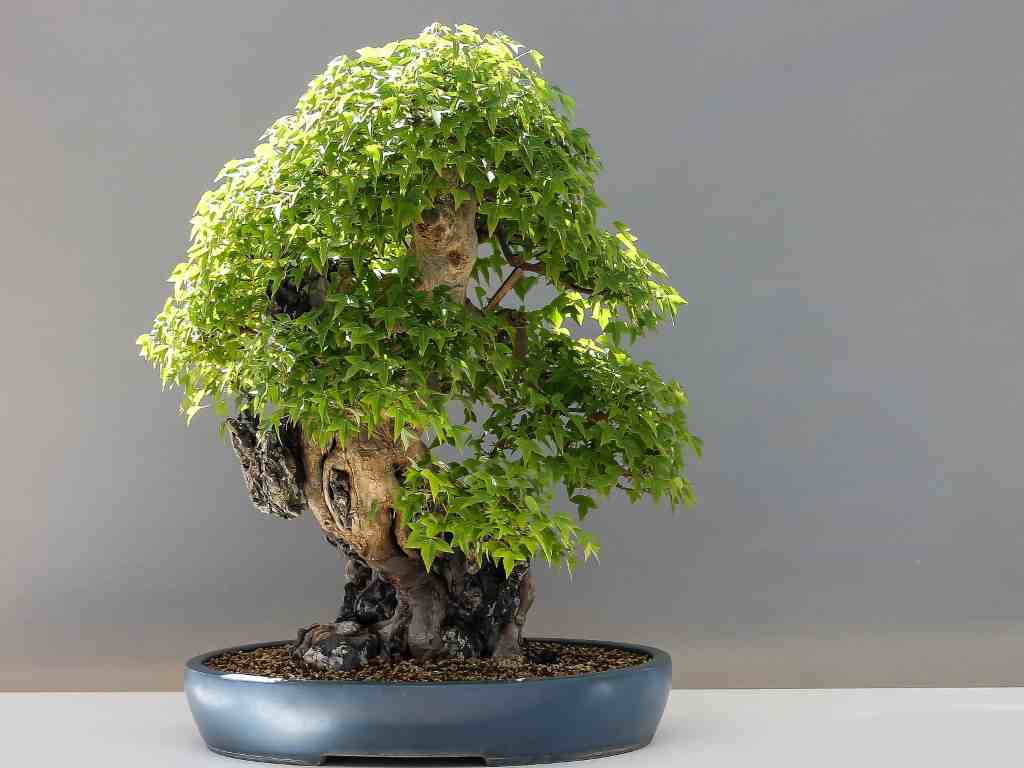So there you are, standing in front of a huge tree and wondering, can I make this tree into a bonsai? The answer is YES! Any tree species can be used to make bonsai. However, the species you choose may limit your ability to create the exact bonsai you wanted.
Any species of tree can be a bonsai. A bonsai is actually a trained tree, shaped using practices such as wiring the branches and pruning. A bonsai’s origin is Chinese, and it first evolved as a method of making the most out of limited space.
Over the years bonsai has evolved, and you will find many different styles of this beautiful art form both inside and outside North America.
What Is Bonsai:
Bonsai trees are miniaturized, stylized versions of full-size trees that have been cultivated using horticultural techniques.
They can start very small and grow over decades into impressive miniature living works of art.
Bonsai gardening originated in China over 500 years ago, and it’s transported to Japan and Korea by the 1600s.
What Type Of Tree Works Best As A Bonsai?
Now, some trees tend to make better Bonsai than others. Bonsai look best with small leaves, so trees that are already small-leafed will be easier to convert into Bonsai shape. Evergreens work great for this, such as Junipers or Yews.
In order to keep a Bonsai tree properly shaped, you will need to prune it regularly. There are two main types of Bonsai trees: some can be easily shaped as they grow new shoots, while others require more effort. If you work with the first category of trees then your job will be far easier.
Having said that, if a tree has large leaves or doesn’t grow new shoots easily doesn’t mean you can not make them bonsai.
For example, a pine tree might not back bud easily, but there are many beautiful Bonsai Trees being grown from different species of Pine.
It simply means you have to work a bit harder to make it a bonsai.
Is It Ever Too Big To Become A Bonsai?

Bonsai trees can be of any size, shape, and age. You can also force a tree to become smaller than it is currently.
Expert growers can train a bonsai tree to grow into whatever shape they want, no matter how big it is. Training starts whilst the tree is still young and can be done with as little as four weeks of effort. It’s a bit like training someone to become a champion athlete.
The internet is full of incredible examples of large trees that have been ‘trained’ and put into funny and weird shapes. Some are even too big to be real!
How Do I Find A Bonsai Tree That Is Right For Me
Before you start looking for the right Bonsai, it is important that you decide on what environment it will be living in. Choose a Bonsai tree that not only appeals to the eye but also fits your home environment.
Bonsai trees come in various sizes, and you should buy one that will look good in the space you have. You need to know how big a Bonsai tree will get before you buy it. For example, a Mame bonsai Tree is only 4 inches but a Chinese Elm Bonsai Tree can grow up to 8 feet tall!
Indoor Bonsai trees are placed in different conditions. Some of them need a lot of light, some need good drainage, some need to be kept at a certain temperature. You should always consider this when buying your Bonsai tree.
Some bonsai trees can be easier to grow than others. If you’re just starting out and don’t have much experience in growing bonsai, choose easier varieties like fig, juniper, or schefflera to grow. However, if you are looking for a more challenging job, then you can give Thousand Stars a go.
Always choose a healthy tree. You can tell if a tree is healthy by looking at its branches and leaves.
- The branches should not have even distribution throughout the tree.
- Its leaves should be green and should not look off-color.
- The roots should stick out slightly and be firmly anchored into the pot.
- And the trunk should be thicker at the bottom.
Popular Bonsai Trees
Here is a list of the most popular types of Bonsai trees for beginners.
Ficus:
The Ficus Bonsai tree is one of the most popular species for beginners because it is easy to grow. It is also the easiest climbing tree, so it can be shaped easily. The ficus has a straight trunk making it easier to train as a bonsai.
Chinese Elm:
The Chinese elm is another popular tree for beginner bonsai artists because it grows fast and tolerates many different soil conditions. It is easy to care for and very forgiving when it comes to mistakes.
Juniper:
The juniper bonsai tree is another good choice for beginners and is readily available in the United States. This tree grows very slowly and can be kept in an upright position which makes it ideal for use as a bonsai.
Cotoneaster:
They are popular among beginners because they require little maintenance
Boxwood:
Boxwood is another popular tree for bonsai due to its dense foliage and small size. They are very common in hedges and yards, so you will often find them at nurseries or garden supply stores.

What Tools To Use For Bonsai:
The tools listed below are the basic ones needed in order to have a successful experience with Bonsai trees.
These tools are:
- A Hand Pruner.
- A Root Hook.
- A pair of shears.
- A concave cutter.
- Wire Cutters and Pliers.
- A brush to remove dirt from the tree
Easy Steps For Creating Your Own Bonsai
Creating a bonsai on your own can be challenging especially if you have zero knowledge about it. However, there are some easy steps that you should follow to make the process simple.
Step 1 – Choose a Small Tree:
The first step in creating your own bonsai tree is to choose a small tree. This is important because a large tree will take more time and care to properly train and shape into the bonsai style.
Step 2 – Pick The Right Container
The second step is to pick the right container for your bonsai. While most people think of a traditional pot when they think of bonsai trees, there are other options available. You may want to use a stone, an antique vase or even an old wine barrel as your container.
Step 3- Prune The Root Structure
The third step is pruning the root structure of your bonsai to suit your desired look. The roots must be pruned so that they fit nicely inside the container and are not spreading out all over the place.
Step 4 – Place The Bonsai in Ideal Conditions
Now put the bonsai tree in an area where it can get ample sunlight. If you are planning to grow bonsai outdoors, now is the best time to place it.
If you are planning to grow bonsai indoors, then select a location where it gets the right amount of light. A south-facing window can be a good place for your bonsai if you live in Northern Hemisphere.
Step 5 – Water and Prune Your Bonsai Tree regularly
Watering your bonsai tree is a bit different than watering your regular houseplants, so take proper steps.
You also have to prune your bonsai so that it can maintain a proper structure.
Besides all of the above steps, you may also want to train your bonsai to a particular style. To achieve this you have to wire your bonsai. Wiring a bonsai is quite an important topic in bonsai gardening. I wrote a detailed post on how to wire a bonsai, don’t forget to see that.
Why Are Bonsai So Expensive?
This is a common question among first-time buyers. Many have no idea how much work goes into growing one of these priceless plants over a prolonged period, or how rare they are.
It is more than just an ordinary plant that can be purchased at your local nursery, after all, they take years to cultivate. They are considered art, inspired by classical Chinese paintings.
Don’t let the price of bonsai prevent you from buying if you’ve never owned one before.